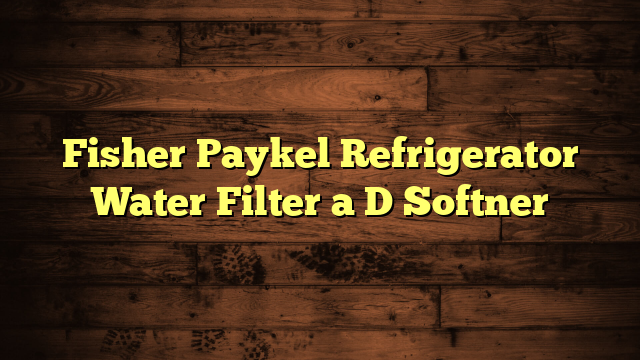How Much Water Should Be in a Water Softener Tank? Avoid Overfilling
Imagine you've just moved into a new home with a water softener that's been poorly maintained, and you notice the water feels oddly hard. You might wonder how much water should actually be in the tank to guarantee it operates efficiently. Keeping the right water level is essential not just for performance, but also to prevent issues like leaks and mold. So, what are the ideal water levels, and how can you tell if you're overfilling? Understanding these aspects could save you from costly repairs and guarantee the longevity of your system.
Key Takeaways
- Ideal water levels in a water softener tank should be one-third to one-half full for effective operation.
- Avoid overfilling, as excess water can cause damage and reduce system efficiency.
- Regularly monitor water levels to prevent issues like mold growth and diminished water quality.
- Signs of overfilling include pooling water, unusual sounds, and frequent regeneration cycles.
- Maintain proper salt levels and perform regular checks to ensure optimal water softener performance.
Understanding Water Softener Functionality
Water softeners play an essential role in improving your home's water quality by removing minerals like calcium and magnesium that cause hardness. Understanding how these systems work will help you appreciate their value.
At the heart of a water softener are key components: the resin tank, brine tank, and control valve.
The ion exchange process is fundamental here. When hard water enters the resin tank, it flows through resin beads that are coated with sodium ions. As the hard water passes through, the resin beads attract and bind the calcium and magnesium ions, effectively exchanging them for sodium ions. This exchange reduces hardness, making your water softer and easier on your plumbing and appliances.
After a while, the resin beads become saturated with calcium and magnesium, and that's when the brine tank comes into play. The brine solution, rich in sodium, regenerates the resin beads, allowing them to continue their work.
Ideal Water Levels Explained
Maintaining proper water levels in your softener tank is essential for its efficient operation. Ideal water levels help guarantee that the resin beads in your softener have enough water to effectively remove hardness minerals like calcium and magnesium from your water supply.
When the water level is just right, the softening process runs smoothly, and you'll notice better water softener efficiency. Typically, the perfect water level should be maintained between one-third to one-half full. This allows the resin to be fully submerged, guaranteeing that it can work effectively during the regeneration process.
If you find that your tank consistently holds too little water, you mightn't be utilizing the softener to its full potential, leading to less efficient softening. Conversely, if the tank is too full, you could encounter issues that disrupt the softening process.
Regularly checking your water levels is a proactive way to maintain your system's efficiency. By keeping an eye on these levels, you can guarantee that your water softener operates effectively, providing you with consistently softened water for your household needs.
Risks of Overfilling
Overfilling your water softener tank can lead to significant problems that impact its performance. When the tank is overfilled, it can cause water damage not just to the softener itself but also to surrounding areas. Excess water may leak, creating a damp environment that invites mold and mildew growth.
Plus, too much water can diminish the system efficiency, as the softener struggles to effectively process the water. An overfilled tank can disrupt the regeneration cycle, causing the system to work harder than necessary. This can lead to increased wear and tear on components, ultimately shortening the lifespan of your unit.
Additionally, when the system isn't operating efficiently, you may notice a decline in water quality, which could lead to hard water issues resurfacing in your home.
To avoid these risks, it's crucial to monitor the water levels in your softener regularly. Ensuring that your tank remains at the ideal level will help maintain system efficiency, prevent water damage, and prolong the life of your water softener.
Regular maintenance and attention can save you from costly repairs and headaches down the line.
Signs Your Tank Is Overfilled
Recognizing the signs of an overfilled water softener tank can prevent the issues that come with excessive water levels.
Keeping an eye on your water level indicators is essential, as they can help you avoid potential problems.
Here are some common tank overflow signs to watch for:
- Water pooling: If you notice water accumulating around the tank, it's a clear sign of overfilling.
- Increased humidity: Excessive moisture in the surrounding area could indicate a leaking or overflowing tank.
- Unusual sounds: Gurgling or splashing noises can mean water levels are too high.
- Discolored water: If your softened water appears cloudy or discolored, it may be due to water mixing improperly in the tank.
- Frequent regeneration cycles: If your system seems to regenerate more often than usual, it might be struggling with excess water.
Proper Maintenance Tips
Proper maintenance of your water softener tank guarantees it operates efficiently and lasts longer. Start by regularly checking the salt levels; maintaining them at the recommended level prevents your system from working harder than necessary.
You should also perform filter cleaning every few months. This process helps remove any debris or build-up that could hinder the system's performance.
Another critical aspect is resin replacement. Over time, the resin beads can become less effective at softening water. Depending on your water quality, this might be necessary every 5 to 10 years. When you notice a decrease in water softness, it's probably time to replace the resin.
Additionally, inspect the tank for leaks and corrosion. Address any issues immediately to prevent larger problems down the line.
Make it a habit to run a regeneration cycle according to your water usage; this keeps everything functioning smoothly.
When to Seek Professional Help
Sometimes, despite your best maintenance efforts, issues can still arise with your water softener. Knowing when to seek professional help is vital for maintaining your water quality and guaranteeing effective tank maintenance.
Here are signs that it's time to call in the experts:
- You notice a sudden change in water quality, like increased hardness or an unusual taste.
- The system's regeneration cycle seems irregular or doesn't occur at all.
- You see visible leaks around the tank or other components, indicating a possible malfunction.
- The control panel displays error codes or warnings that you can't resolve.
- Your system's performance drastically decreases, leading to more soap scum or hard water stains.
If you encounter any of these issues, it's wise to consult a professional. They can diagnose the problem accurately and provide the necessary repairs or maintenance.
Frequently Asked Questions
Can I Use My Water Softener During Regeneration Cycles?
You shouldn't use your water softener during the regeneration process, as it can interrupt softener maintenance. Wait until the cycle's complete to guarantee your system works efficiently and provides the best water quality for your needs.
What Types of Salt Are Best for Water Softeners?
When choosing salt for your water softener, consider rock salt and solar salt. Rock salt's affordable but may contain impurities, while solar salt is purer and dissolves more efficiently, helping your system run smoothly.
How Often Should I Check Water Levels in the Tank?
You should check your water levels regularly for proper water level maintenance. A monthly tank inspection helps guarantee efficiency and prevents issues. Keeping an eye on the levels saves you from potential softener problems down the line.
Does Water Temperature Affect Water Softener Performance?
Water temperature impacts softener efficiency; warmer water enhances ion exchange, while colder temperatures can slow down the process. So, monitor the water temperature to guarantee your softener operates at its best and delivers ideal results.
Can I Install a Water Softener Myself?
You can absolutely tackle a DIY installation of a water softener! By doing it yourself, you'll save money and enjoy the benefits of softened water, enhancing your home's efficiency and prolonging the life of your appliances.
Conclusion
In summary, maintaining the right water level in your water softener is essential for optimal performance. Aim for one-third to one-half full to guarantee effective ion exchange and prevent issues like leaks or mold growth. Regularly check your tank, watch for signs of overfilling, and adjust as needed. By prioritizing proper maintenance, you'll enhance your softener's efficiency, extend its lifespan, and enjoy high-quality water. Remember, a well-cared-for system benefits both you and your home.







